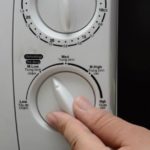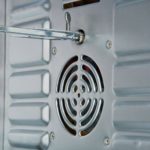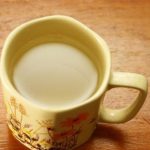Microwave ovens are popular household appliances as they quickly heat up food. Many people wonder whether it is correct to cover or uncover the food when using a microwave oven.
According to experts, it is recommended to cover the containers or bowls that hold the food before putting them into the microwave oven. There are several reasons to do this:
– Covering the food containers helps with hygiene, as uncovered containers can cause splatters. Some foods can even explode in the microwave, scattering food bits all over the oven, making it difficult to clean. Therefore, it is best to cover the containers or use a tight seal.

– When you cover or seal the containers or bowls before putting them in the microwave oven, it helps to keep the interior of the device clean and reduces the chance of unwanted accidents. This saves time and effort in cleaning the appliance for the user.
– Ensuring the quality of the food is another reason. When food is not covered during the microwave process, it can affect the texture, consistency, moisture content, and even heat distribution. Some foods can become dry and lose their taste. Covering the food also helps to heat it evenly.
Therefore, it is best to cover the food when putting it in the microwave oven. Of course, you should use covers or wraps that are safe to use in a microwave oven to ensure safety.
In addition to not covering the food, many microwave oven users make other mistakes:
Continuously microwaving food: Operating the microwave oven continuously without any breaks can overload the device and mix food smells together. Therefore, it is best to let the appliance rest for about 1 minute before microwaving the next dish.
Excessive use of disposable plastic and foam: Many people have the habit of buying ready-to-eat food, which comes in disposable plastic or foam containers, and then microwaving it directly. This is harmful to your health. Foam should never be put in the microwave oven. As for plastic or nylon, as mentioned above, you need to carefully check the manufacturer’s instructions. However, most disposable plastic containers are not microwave-safe. Even some microwave-safe plastics should be used with caution as they may leach harmful toxins.
Ignoring the cleanliness of the microwave oven: A common mistake in households with microwave ovens is rarely paying attention to the cleanliness inside the appliance, or even never cleaning it at all. This can affect the efficiency of the device and potentially create a breeding ground for bacteria inside the appliance, posing a high risk of contaminating our food. Therefore, it is advisable to clean the microwave oven 1-2 times per week.
Not removing the packaging of fresh food: Many people defrost food without removing its packaging. Experts advise against this practice, as it can cause chemicals from foam or plastic packaging to leach into the food. Therefore, it is best to remove the packaging and any excess water if present before placing the fresh meat into microwave-safe plates or trays.
Using the microwave oven for the wrong purposes: Using the microwave oven to heat non-food items is dangerous. Although some people believe that the microwave oven is suitable for drying certain kitchen utensils, it is not recommended as it can cause fire or explosions.
Incorrect placement of the microwave oven: Microwave ovens generate heat, so they should not be placed against a wall or have no ventilation. Placing the microwave oven in an enclosed cabinet can quickly damage and even cause explosions. Putting the microwave oven on top of the refrigerator is also a harmful mistake. Placing the microwave oven next to other hot appliances is also dangerous for the user.
2. Avoid excessive use of disposable plastic and foam containers, as they may not be microwave-safe and can be harmful to your health.
3. Ignoring the cleanliness of your microwave can affect its efficiency and create a breeding ground for bacteria.
4. Always remove the packaging from fresh food before defrosting to prevent chemicals from leaching into your meal.
5. Do not use the microwave for non-food items, as it can cause fires or explosions.
6. Ensure proper ventilation and placement of your microwave to avoid overheating and potential explosions.
Food Containers’>Guide to Determining Microwave Safe Food Containers
Are you unsure if a container is safe for microwave use? Following these easy steps can help you determine if you should or should not use the container in the microwave.





























 Containers
Containers







